Targeting the simple application tier, microcontroller (MCU) vendors continue to drive their products to break new limits of cost, current drain and size, while adding features to ease development, hoping to entice embedded system developers. What do the latest MCUs offer this year? Let us take a look.
IoT-targeted MCUs
“New or established, every semiconductor vendor needs a new paradigm to solve four critical issues in the Internet of Things (IoT), namely, design time, differentiation, time to revenue and design cost,” explains Alexandru Voica, senior technology specialist, Imagination Technologies, in an interview with EFY. He adds that, in the IoT market, consumers have high expectations; devices need to be affordable, power-efficient and must work out-of-the-box.
IoT-targeted MCUs look mostly at network connectivity in the form of wired (Ethernet) or wireless (Wi-Fi, Bluetooth or others), lower power and a wide range of sensors like temperature, motion or humidity.
T. Anand, managing director, Knewron, says, “I would bet mostly on addition of communication standards like Wi-Fi and Bluetooth Low Energy (BLE). An upcoming chip from Espressif Systems has both Wi-Fi and BLE put together in one system on chip (SoC), ESP32, which could be another game-changer.”
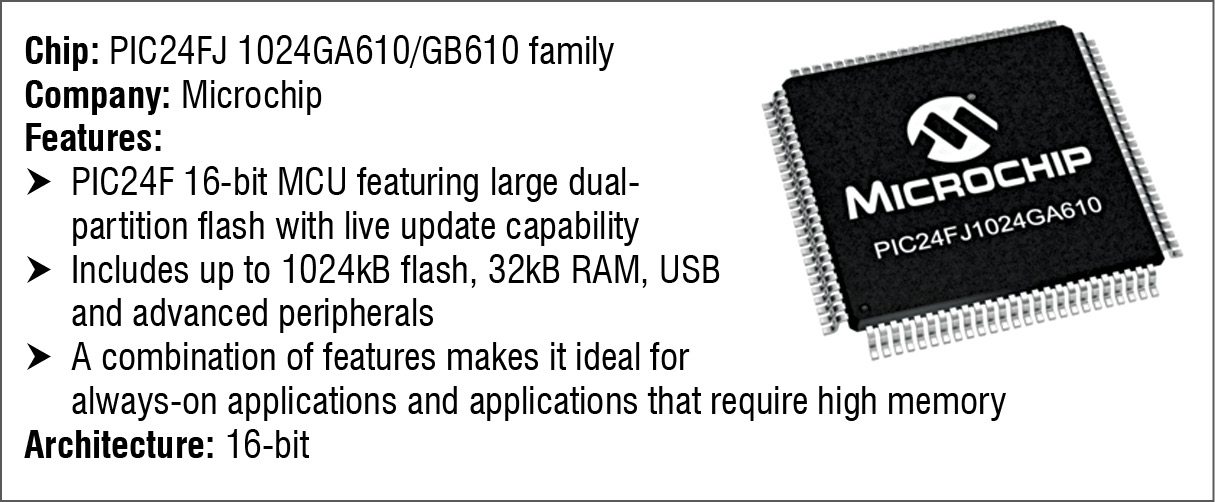
Ingenic M200 is another good example of an innovative SoC built from the ground up for wearable devices. It implements a power-saving hardware architecture where a high-performance microprocessor without interlocked pipeline stages, having a central processing unit (CPU) clocked at 1.2GHz, tackles most of the heavy-lifting, while less-demanding tasks are handled by a secondary low-power 300MHz MIPS CPU.
Besides the usual migration to higher-density technology node (90nm and beyond) to deliver more features, last year memories and computing power in the same or smaller die area (following Moore’s Law) also saw the first ARM Cortex M7 core product as well as the first low-power ARM Cortex M4 as a mix of low power consumption and power-processing performances. This suits perfectly the new wave of wearable products’ requirements, according to Franck Martins, MCU marketing and application, senior manager, GC&SA region at ST Microelectronics.
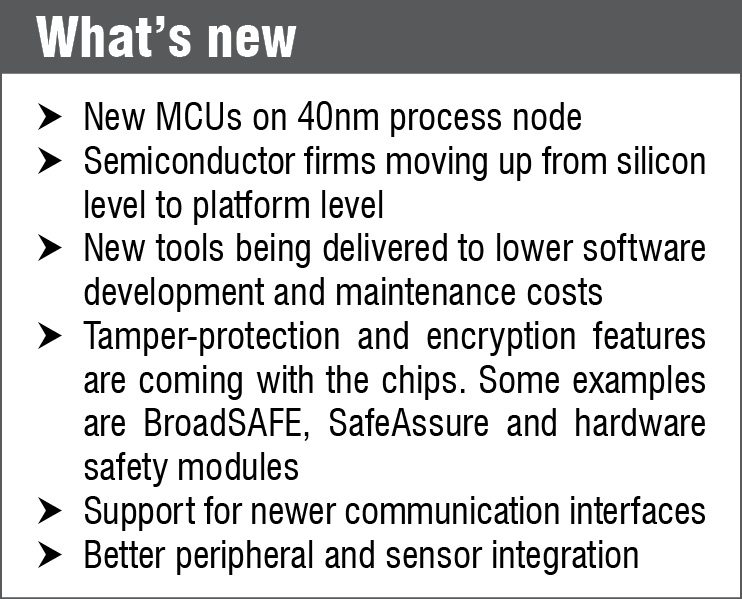 However, Aravind Navada, senior engineering manager, Integrated Systems and Transceivers Group, Analog Devices, India, has a very different perspective. He says, “In my opinion, there is no such thing as an IoT-targeted MCU. MCUs in general are an integral part of IoT use cases. While the IoT encompasses a lot of applications (both battery-powered and line-powered), MCUs in the future would see integrated connectivity (both wired and wireless).”
However, Aravind Navada, senior engineering manager, Integrated Systems and Transceivers Group, Analog Devices, India, has a very different perspective. He says, “In my opinion, there is no such thing as an IoT-targeted MCU. MCUs in general are an integral part of IoT use cases. While the IoT encompasses a lot of applications (both battery-powered and line-powered), MCUs in the future would see integrated connectivity (both wired and wireless).”
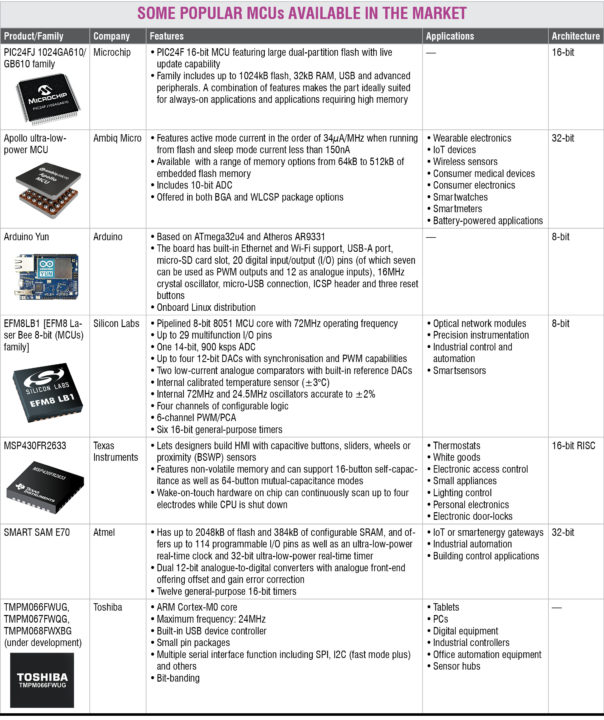
Rise of Type-C
Navaneethan Sundaramoorthy, co-founder and CMO, Uncanny Vision Solutions, explains that the most exciting feature for him in the last 18 months has been the introduction of universal serial bus (USB) Type-C interface in MCUs from Cypress, Texas Instruments, NXP and others. “While USB Type-C has just entered the market in late 2015, it is going to rapidly reach more than a billion consumers within the next 18 months—starting with smartphones, personal computers and tablets,” he says.
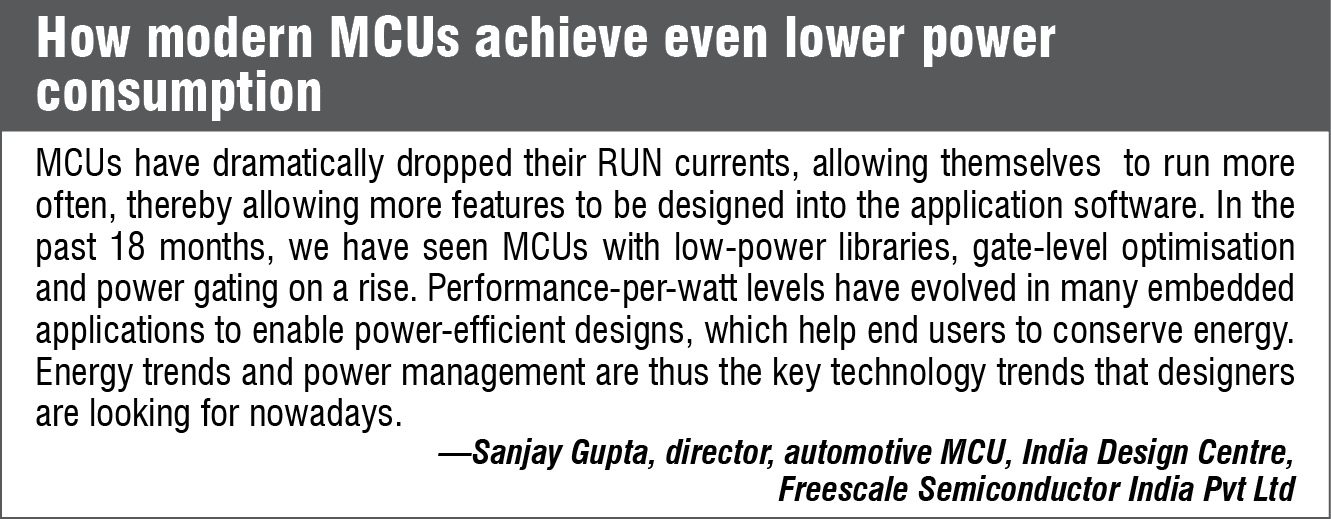
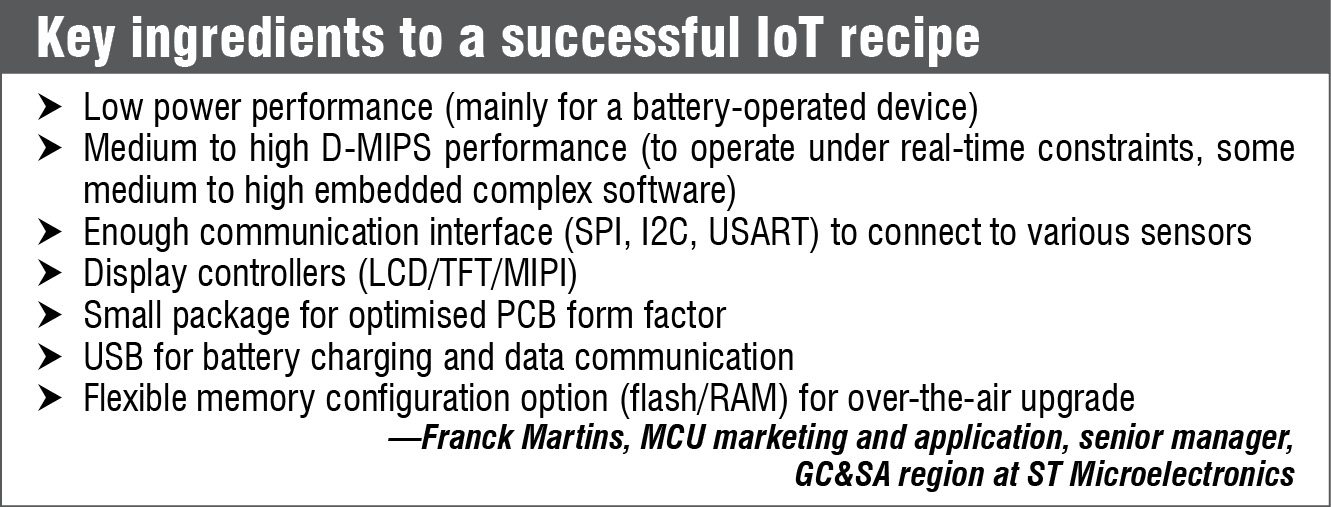 “USB Type-C is the biggest change in USB interface and, as described by many industry observers, it will soon be the one cable to rule these all. With its ease of use through reversible connections, higher power-carrying capability and flexibility to carry multiple types of data (video, USB, etc), it is going to pervade lots of electronics,” Sundaramoorthy adds.
“USB Type-C is the biggest change in USB interface and, as described by many industry observers, it will soon be the one cable to rule these all. With its ease of use through reversible connections, higher power-carrying capability and flexibility to carry multiple types of data (video, USB, etc), it is going to pervade lots of electronics,” Sundaramoorthy adds.
Packing high-end performance
Baikal-T1 processor is the first Russian offering for the communications market to use a MIPS P-class Warrior CPU, boasting highly-competitive properties in terms of performance, technology node and compatibility.
Martins says, “Though the upper boundary level of MCU has been constantly pushed up in the past few years, thanks to higher speed and processing power likewise, with the latest introduction of ARM cortex M7 (STM32F7) and STM32 enhanced architecture element such as ART accelerator, there is still a quantic barrier made up by the operating system (OS), which cannot be run out of MCU platform. Only a microprocessor unit (MPU) with a memory management unit (MMU) can operate iOS or Android OSes.”
Voica says, “We now have chips available, like M-class M5150 MCU, which integrate digital signal processing (DSP) and single instruction multiple data (SIMD) functionality, virtualisation support and advanced security features plus an MMU and cache controllers, which enable these to run full-fledged OSes like Linux.”
“Nevertheless, it is true that more functionalities previously handled by MPUs are managed by the MCU. For instance, the sensor-hub function (fusion of various environmental sensors data) that was implemented by the main AP (application processor or MPU) is now covered by a dedicated MCU with outstanding power-consumption benefit for battery-operated devices such as smartphones,” adds Martins.
Reducing manufacturing costs
“Broad technology changes in the last 18 months are mostly incremental and evolutionary such as continued lower power and better integration with more features like camera interfaces,” explains Sundaramoorthy.
Newer MCUs come with integrated functionality that was previously handled by external components. This allows design engineers to reduce their bill of materials (BoM). Availability of multi-standard support for communication standards, sensor fusion or hardware based security are all small but definite steps towards a more integrated, smaller and less expensive end system.
While cost savings are very minute on an individual level, these greatly add up with volume. Moreover, these simplify or solve many other problems faced while placing numerous components onto a circuit board that has to shrink with each successive generation to keep up with customer requirements.
“If everything is integrated together in a module, overall size and cost of the IoT solution will also be extremely less, thereby making products competitive. Engineers today are looking for MCU-integrated modules, where they can write their own applications,” explained Dhiraj Sogani, general manager and senior vice president, Systems Business Unit, at Redpine Signals Inc., in an interview with EFY. Redpine Signals has solutions coming up where an MCU will be integrated inside modules for vehicular communication.
The vision
The features we would like to see in more MCUs are in the area of vision capabilities. Adding computer vision to IoT MCUs will dramatically increase their applicability in broad areas including security/surveillance, drones, robotics and so on.
Key features needed in MCUs to support computer vision are integrated image or camera sensors with newer technologies like RGB-IR sensors for better low-light sensitivity and faster processors like ARM Cortex-A series processors to handle more computationally-intensive vision processing.
Newcomers like STM32F4x9 with HW graphic acceleration (Chrom-ART accelerator) and MIPI support are good for applications with displays. Embedded hardware with PDM-to-PCM conversion (DFSDM on STM32L4), together with low-power batch-acquisition mode, allows voice-recognition feature to run efficiently on STM32 platform.
Driving ultra low power
With significant integration and lower cost requirements, MCUs have been going down process nodes more aggressively than in the past.
Navada explains that most MCUs announced in the last 18 months have brought power consumption down by going to deeper sub-micron processes and adding features such as power shut-off. Wireless connectivity and MCUs are now showing up either in a single package or on monolithic silicon as MCUs and connectivity are going hand in hand. Finally, power management features such as buck converters are getting integrated into MCUs to allow better power efficiency.
As mentioned above, the fact that dynamic power and area reduce at advanced geometries and aggressive integration requirements, lower process node such as 55nm and below are becoming common place. “Requirement of integrated flash puts a brake on going down all the way to the most aggressive process geometries used by microprocessors. Aggressive power shut off, multi-voltage and low-voltage designs are some of the architectural changes seen in reducing power consumption,” adds Navada.
Martins further explains that process technology improvements (going towards smaller technology lithography) tend to further lower internal core voltage to minimise dynamic power consumption, but not without control over leakage current responsible for consumption in low-power/standby mode. He adds, “Power consumption cannot be judged only from datasheet values but rather depends on real application profile results. There are many embedded MCU features that contribute to optimise power consumption with batch-acquisition mode, ART accelerator and DMIPS (to execute the same code in less time, which leads to less power consumption), highly-flexible clock speed and source selection, along with scalable internal voltage.”
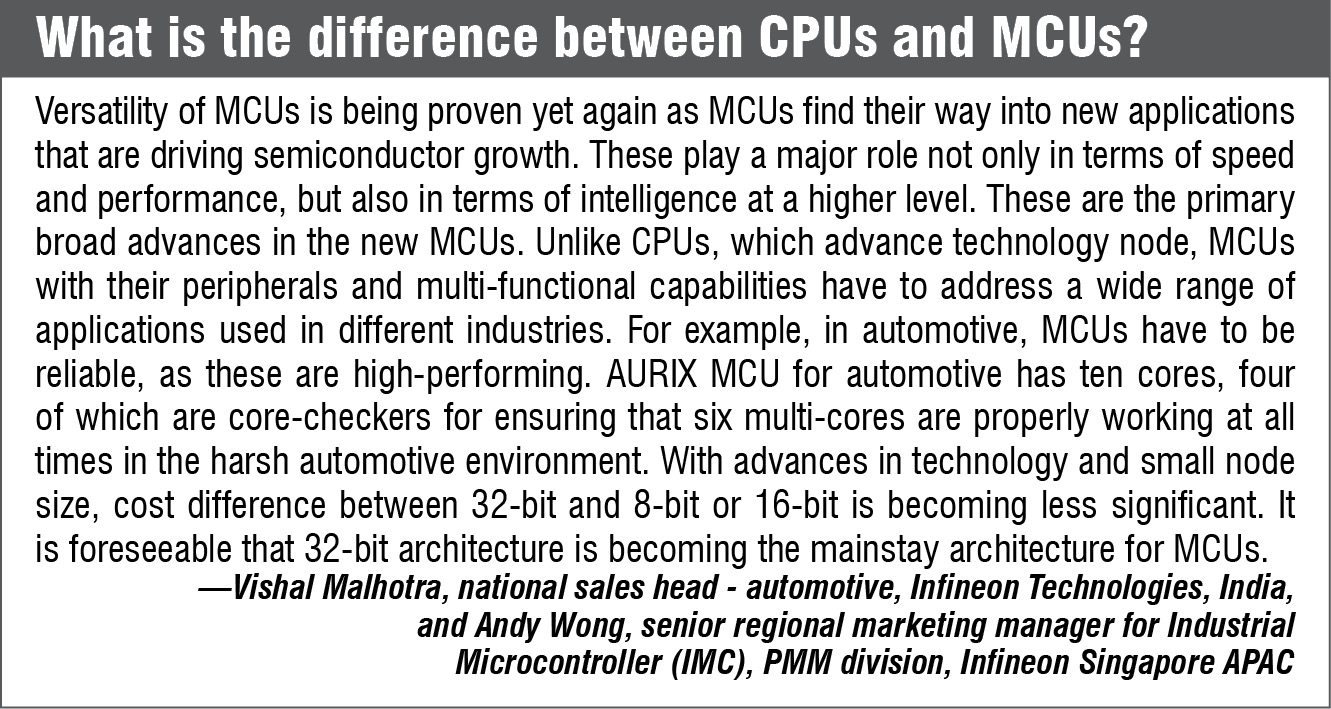

The future
As we already know, the line between MCUs and SoCs is getting blurred. Looking at the advances that have happened, blurred seems to be an understatement. Cores are now available from firms like Imagination Technologies, which allow MCU or embedded controller developers to build MCUs that can go so far as to execute full-blown OSes like Linux.
When can you start using such chips in your project? For starters, Microchip has already announced on their website that the CPU at the heart of their PIC32MZ family has been upgraded to a MIPS M5150—a Warrior M-class processor core that comes with full hardware virtualisation.
Dilin Anand is a senior assistant editor at EFY. He is B.Tech from University of Calicut, currently pursuing MBA from Christ University, Bengaluru









I like the latest MCs